What is CNC Machine & How Does it Work?
A CNC (Computer Numerical Control) machine is a device that uses computer programming to control the movement and operation of tools. It requires instructions from a computer that are stored on a storage media (tape, disk, chip), and they can be retrieved at present or in the future. Numerical Control is also called "direct digital control" as it means controlling by numbers. CNC has become a revolution in industrial manufacturing and can be applied to machines or processes that need precision.
Since we understand what is CNC machine, it is time to understand its operation in more detail. As these are a specific type of control system where the main manipulated variable is position.
Numerical values of positions and secondary functions are usually recorded in a form that can be stored and revised indefinitely. Converters transform this information on hard drives, tapes, and other formats into signals for servo mechanisms that allow the machine to work.
Components of a CNC System
The components of a CNC system are the Control, the Positioning Mechanisms, and Drive Elements. A Control does computer maths, serves as the interface for a computer and controls data from outside sources, and sends output to Positioning devices. They also monitor feedback for accuracy. The positioning device processes, receives, and sends feedback to the Control. The motors, positioning screws, nuts, and hardware that physically enable the required motion delivered from the Control to the specific axis are the mechanical drive elements.
Basic Motion Types in CNC Machining
1) Rapid Motion Type
A sort of motion known as rapid motion or positioning directs the machine to operate at its top speed. This kind of motion is employed during the machining cycle to cut down on idle or lag time. In most cases, rapid motion is used to remove clamps and other impediments or to move the tool to and from cutting positions.
With that said, make sure to check the machine handbook as different machines may have varying rapid rates. A machine's rapid pace may occasionally exceed 1000 RPM, which is exceedingly quick. Meaning that the operator must exercise caution when confirming directions for rapid motion.
2) Straight Line Motion
Using the motion command "Straight Line Motion," a machinist can instruct a CNC machine to move a workpiece in an exact, straight line. Depending on the programme, the speed of Straight Line Motion can be configured to govern the machine's linear movement per minute, in inches or millimetres.
For workpieces requiring a straight cutting action, such as turning a straight taper, diameter, or face and milling or drilling straight surfaces, Straight Line Motion is typically employed.
3) Circular Motion
The Circular Motion type is used to generate radii during the machining process for any movement that needs a circular path. Using CNC controls, you must tell the machine what radius of an arc to produce in order to generate the radii.
Keep in mind that there may be variations in CNC controls depending on the type of circular motion. For instance, whereas early CNC controls used directed vectors, modern ones handle radius parameters by using the letter "R" to denote radius.
Types of CNC Machine Systems
One tool cannot be used for all cutting tasks. For roughing and finishing, several tools are utilised, and specific tools are needed for specific operations like drilling, slotting, and thread cutting. At all times, the appropriate cutting tool must be utilised. The size and shape of the finished object determines the size and shape of the cutting tools that you can employ.
You may find a comprehensive description of the many kinds of tools that are available as well as the applications for which each type is best suited in a tool manufacturer's catalogue. Keep in mind that the material of the workpiece, the type of coolant, the type of tool, and the machine tool itself all affect the depth of cut that may be made. When deciding what to consider, keep the following in mind:
1) Circular Motion
The fluted drill is the item that is most frequently used to drill holes. With two, three, or four cutting lips, drills are created. Solid stock is drilled with a two-lip drill. Previously drilled holes can be enlarged with the three- and four-lip drills.
The CNC drilling machine uses computer-controlled movements that are programmed to drill holes in complex patterns and at precise depths, making them ideal for manufacturing applications.
2) CNC Milling
The work spins while the cutting tool is fixed on a lathe. The work is fed against the rotating cutter of a milling machine. For milling regular and irregular forms, the revolving cutter, also known as the milling cutter, comes in a virtually infinite range of sizes and shapes.
The end mill is the most used type of milling cutter. Shell mills, face mills, and roughing mills are further frequently used tools. You must be careful during milling to avoid making cuts that are deeper than the milling cutter can handle. End mills exist in a variety of sizes and forms, each one created to carry out a particular function. Bullnose, ball nose, and flat are the three primary forms of conventional end mills.
3) CNC Turning
In lathe operations, chips are removed from the workpiece by driving the tool into the material, leaving geometrically accurate surfaces. The shape of the tool and the path it takes through the material determine the sort of surface that is created during the cutting operation.
When a tool's cutting edge wears down, the surface finish deteriorates and the cutting forces increase. Although several factors, including the depth of cut, the characteristics of the material, friction forces, and rubbing of the tool nose, may affect tool vibration, vibration and chatter are unmistakable symptoms of tool wear.
CNC Machining Programming Softwares
High-performance NC programming is necessary for multipurpose machines and intricate workpieces. Depending on the production kind, each person will have different priorities. The information used to manufacture the workpieces frequently comes from various sources. Because of this, the user should carefully review the criteria before deciding on a CNC software.
1) CAD
The term "computer-aided design," or more often the acronym CAD, is used to define the method by which engineering designers use the computer as a creative tool to develop, assess, revise, and complete their designs. The computer is transformed into a terminal where the designer sits to evaluate data, perform calculations, and use computer graphics to rapidly and effectively create a three-dimensional representation of a proposed design.
The image can be stretched, compressed, and generally analysed. It can also be rotated, viewed from various perspectives, and divided into distinct planes. Instant modifications are possible. The output data from each stage of the design process can be saved and retrieved whenever necessary. Computer-Aided Manufacturing is the practice of using computers to speed up manufacturing operations (CAM).
The draughtsman converts the original designs into a number of engineering drawings that are created on a computer screen. At this stage, each individual component can once again be rotated, sectioned, scaled up or down, and so on in a further process of evaluation that may or may not result in modifications to the original design.
Fully dimensioned drawings can be printed from a printer or plotter connected via an interface after this process is complete, or the data can be saved as numerical data for later retrieval.
2) CAM
Computer-aided manufacturing is frequently used to refer to computer-controlled manufacturing operations. With the help of this software, technical data from CAD models may be extracted and used by a machine programme to create unique parts. It speeds up the automation process for a final product and enables the CNC machine to function without an operator.
One type of crucial computer-controlled manufacturing process is metal cutting. There are a tonne more, including joining materials together, flame cutting, pressing, electro discharge machining, and assembling pieces.
3) CAE
CAD and CAM together form the cornerstone of computer-aided engineering (CAE). During the pre-processing, analysis, and post-processing stages of the development process, engineers use this programme.
In engineering analysis applications like design, simulation, planning, production, diagnostics, and repair, CAE software is utilised as an auxiliary support tool to assist in assessing and revising product design.
CNC Control Variations
The type of work a CNC machine can perform, the amount of detail it can cut, and the locations on the workpiece it can move all depend on how many axes it has. The distinctions between 3 axis, 4 axis, and 5 axis CNC machines are better described in the below sections.
1) Three-Axis Controls
Two- and three-axis simultaneous machining is possible with three-axis CNC controls. The table or cross-slide is fed in the XY, XZ, or YZ planes in a preset path and separation from the machine spindle or headstock to achieve this in two-axis combinations.
2) Four- and Five-Axis Controls
Beyond the limitations of the traditional three-axis CNC toolpath motions, four- and five-axis CNC Controls offer multiple-axis machining possibilities. The three X, Y, and Z axes are typically the simultaneous contouring axes of a 5 axis cnc machine. The A axis, which is a rotary tilting of the spindle, or Z axis, parallel to the A axis, is also typically included. Additionally, the B axis, which can be either a rotary index table or an additional tilting of the spindle parallel to the X axis, may also be included.
In order to complete numerous machining operations while the workpiece is still clamped in the machine's headstock, additional machining axes and spindles are added. Think about how the turning centre can be machined utilising every machining axis.
Advantages of CNC Machining
Reducing the cost of producing machined components was the primary basic goal for the application of CNC to metalworking processes.
- Reduced programming time
- Increased operational capabilities
- Improved usability of the machining process
- Shorter setup time
- Improved product homogeneity
- Cost reduction
- Accurate production process estimation
- More effective shop scheduling
- Exact cost forecast
- Higher facility utilisation
- Rapid return on equipment investment
- Rapid return on equipment investment
- Elimination of (punched) tape handling
- On-line program revision
- Automatic machine correction
- Control of multiple machines from a single center
- Integration into complex manufacturing control systems
Challenges of Using CNC Machining
The many capabilities and operations provided by the CNC machining process enable it to manufacture a number of goods, such as hydraulic components, screws, and shafts, and help it find application in a variety of industries, including automotive, aerospace, construction, and agricultural. Despite the method's flexibility and adaptability, manufacturing some items with large or heavy components is more difficult than manufacturing other parts.
1) Intricate CNC Parts
While the performance of newer CNC machines is improving, some machines have trouble cutting out complex CNC parts, such as those that are asymmetrical or have especially distinctive patterns. In general, a machine can do complex cuts more easily the more axes it has.
2) Processing of Data
A CNC machine's software and the speed at which it can interact with the cutting tool are two of its drawbacks. Upgrades to technology can frequently provide a rapid cure. If there is a need, you might be able to find quicker hardware and combine it with more potent software for processing rates that make processes efficient.
3) Need of Efficient Workers
As modern technology replaces outdated machinery, fewer workers will be needed. However, those workers who do remain must be of the highest calibre, with extensive knowledge of numerical control control systems and programming, as well as metal-cutting techniques, cutting speeds and feeds, work-holding, and tool-setting techniques.
4) Added Measures
When compared to more conventional methods, CNC machining may require some extra processes. It's critical to take into account the potential consequences of CNC machining on the various materials and parts being cut. It might lengthen the process and affect how quickly things are produced.
5) Cost of Purchase & Repair
The high expense of maintenance is something that several businesses neglect to consider. These machines are complicated, and repairing them requires both mechanical and programming expertise. Implementing preventative maintenance programmes to stop equipment from malfunctioning in the first place is one method to reduce costs. This also prevents unscheduled downtime on the factory floor.
Conclusion
Outlined above are the basics of what is CNC Machine, its process, various operations, required equipment, advantages and disadvantages of CNC machines and some factors that manufacturers & machine shops may think about when determining whether CNC machining is the best option for their specific industrial application.


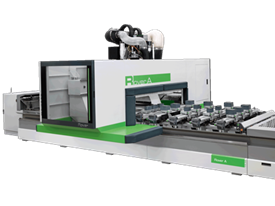
.png)
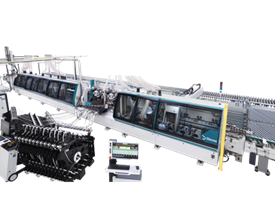
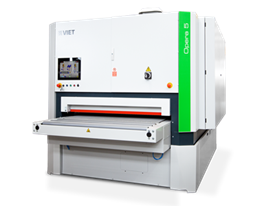
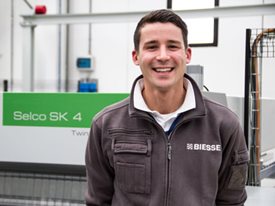
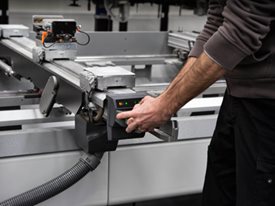

 Worldwide
Worldwide
 Italia
Italia
 United Kingdom
United Kingdom
 Россия
Россия
 France
France
 中国
中国
 Asia
Asia
 Deutschland
Deutschland
 España
España
 Schweiz
Schweiz
 North America
North America
 India
India
 Australia & New Zealand
Australia & New Zealand
 Türkiye Cumhuriyeti
Türkiye Cumhuriyeti
 Middle East
Middle East
 Brasil
Brasil